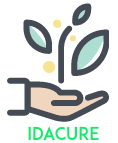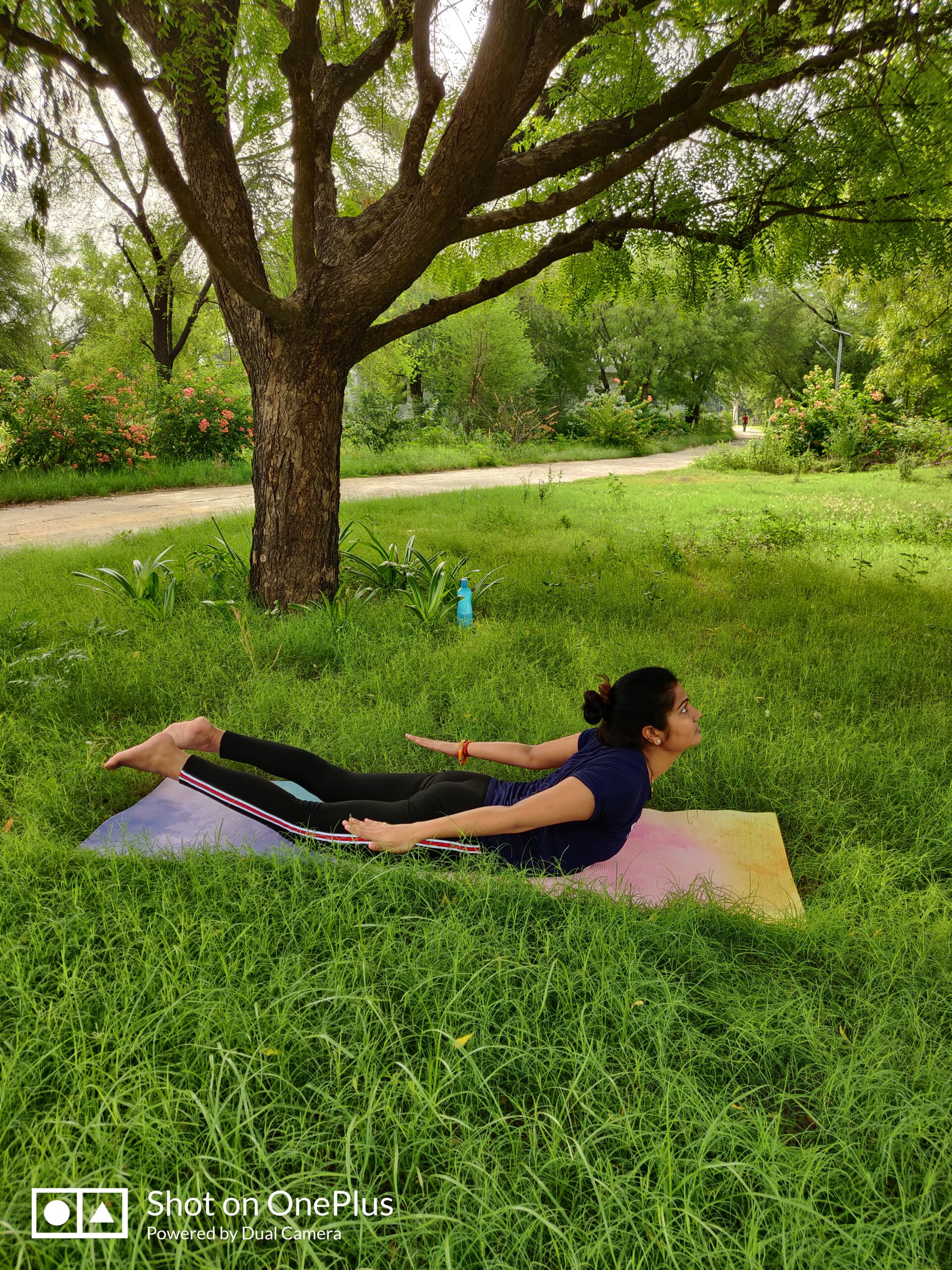In recent years, there’s been a remarkable surge in the global interest in alternative healing methods. More and more people are seeking natural and holistic approaches to manage pain, improve well-being, and complement modern medicine.
Among the most trusted and accessible therapies are acupressure and sujok therapy — both rooted in traditional healing systems but differing in their methods and philosophies.
At IDA Cure, guided by the expert care of Dr. Neha Patel, patients are increasingly turning to these therapies for relief from chronic pain, stress, and various lifestyle disorders.
While both techniques share a focus on stimulating specific points on the body to restore balance, their origins, tools, and treatment strategies vary widely. Understanding these differences can help individuals choose the therapy that best suits their needs.
Read More : Can Really Acupressure Relieve Stress and Pain Naturally?
Understanding Acupressure
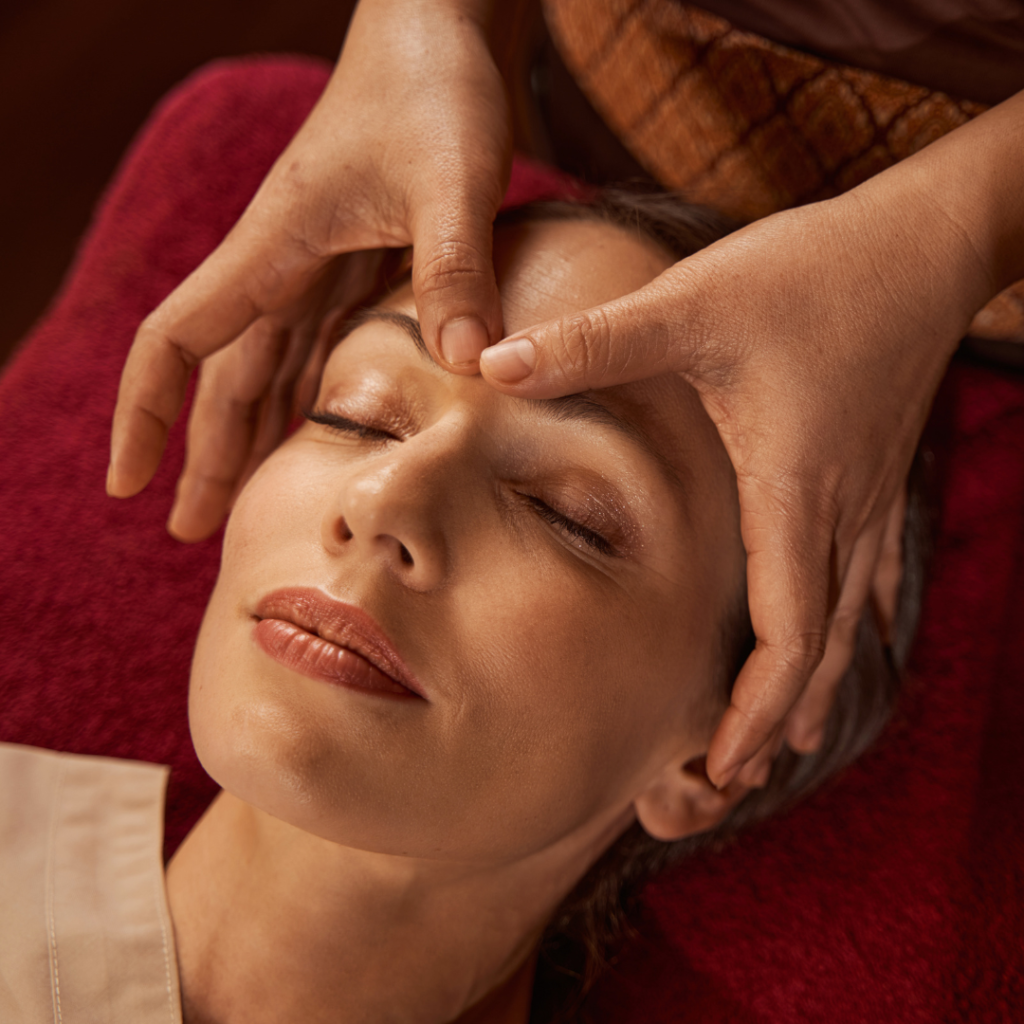
Acupressure is a healing technique derived from Traditional Chinese Medicine (TCM) that involves applying manual pressure to specific points on the body, known as acupoints.
These points lie along invisible pathways called meridians, through which vital energy, or chi (qi), is believed to flow. The goal of acupressure is to balance this energy and restore health.
Practitioners use their fingers, palms, elbows, or even special tools to stimulate these acupoints. Common techniques include steady finger pressure, circular massage, and tapping motions. Each method targets different ailments or discomforts, depending on the area being treated.
Studies have shown that acupressure can be highly effective in relieving chronic pain, headaches, nausea, stress, and anxiety.
For example, research published in the Journal of Pain and Symptom Management revealed that cancer patients experienced significant pain relief and reduced fatigue with regular acupressure sessions.
At IDA Cure, Dr. Neha Patel utilizes acupressure to help patients manage physical and emotional health challenges, highlighting its non-invasive and drug-free nature.
Still, to make an informed choice, it’s essential to explore what is the difference between acupressure and sujok, especially for those seeking natural healing therapies.
Read More : Role of Acupuncture and Acupressure in Arthritis
What is Sujok Therapy?
Sujok therapy is a unique and modern alternative healing method that originated in South Korea, developed by Prof. Park Jae Woo in the 1980s.
The word Sujok comes from the Korean words “Su” (hand) and “Jok” (foot), symbolizing the foundation of this therapy—treating the entire body through the hands and feet.
Sujok is based on the concept that the hands and feet are complete representations (microcosms) of the human body. By stimulating specific points on these areas, practitioners can influence the corresponding internal organs and systems, promoting natural healing and energy flow.
Unlike acupressure, Sujok often uses tools like seeds, color therapy, magnets, elastic rings, and metal probes to target precise points. This makes the therapy highly customizable and suitable for self-treatment under guidance.
At IDA Cure, Dr. Neha Patel often recommends Sujok for patients who prefer non-invasive and self-manageable therapies. Many find relief from conditions like joint pain, digestive disorders, and insomnia through regular sessions.
However, to choose the most effective treatment, it’s vital to understand what is the difference between acupressure and sujok, especially since both therapies focus on energy balance but use vastly different tools and techniques.
Read More : What Is Sujok Therapy and How Can It Heal Your Body Naturally
Acupressure vs Sujok: Key Differences
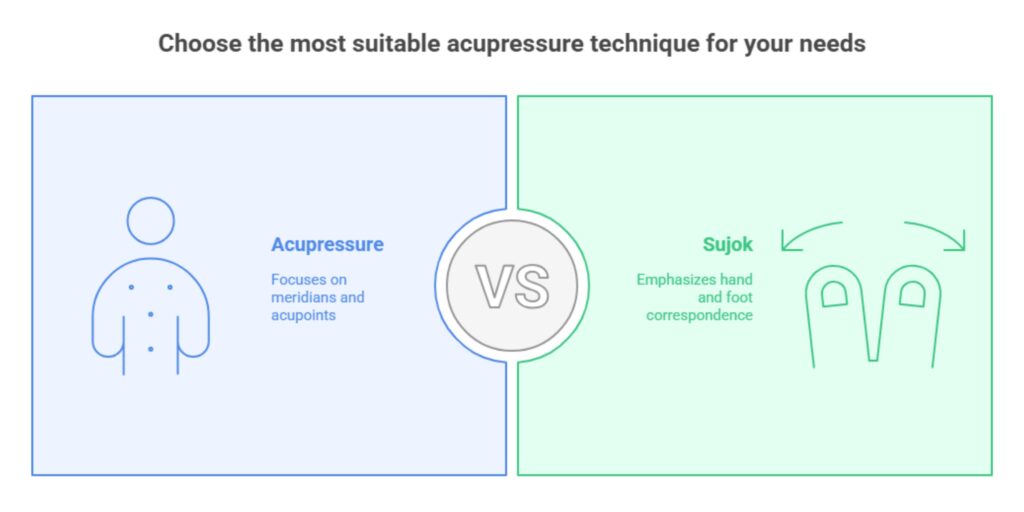
What is the difference between acupressure and sujok? While both therapies aim to restore the body’s natural balance and promote healing, they differ in several key aspects that make each unique in its approach and application.
- Basis of Treatment
- Acupressure is rooted in Traditional Chinese Medicine and focuses on meridians—energy pathways across the body.
- Sujok, developed by Prof. Park Jae Woo, is based on the idea of microsystems, where the entire body is mapped onto the hands and feet.
- Acupressure is rooted in Traditional Chinese Medicine and focuses on meridians—energy pathways across the body.
- Tools Used
- Acupressure typically involves manual pressure using fingers, thumbs, or elbows.
- Sujok utilizes a variety of tools, including seeds, magnets, probes, and color therapy elements, to stimulate specific points.
- Acupressure typically involves manual pressure using fingers, thumbs, or elbows.
- Accessibility and Ease of Use
- Acupressure often requires professional guidance for best results, especially for complex health issues.
Sujok is known for being simple and self-practicable, making it a popular home remedy when taught properly.
- Acupressure often requires professional guidance for best results, especially for complex health issues.
- Areas of Application
- Acupressure targets the entire body, with treatment points spread across meridian lines.
- Sujok therapy focuses primarily on the hands and feet, which are seen as complete representations of the body.
- Training and Certification
- Both therapies offer structured certification programs worldwide. Acupressure training is often included in TCM or holistic health courses.
- Sujok therapy has its own certified programs taught internationally and recognized for their effectiveness in community healthcare.
At IDA Cure, Dr. Neha Patel incorporates both methods based on individual health needs. Still, a deeper understanding of what is the difference between acupressure and sujok helps patients choose the therapy that aligns with their lifestyle, comfort, and health goals.
Similarities Between Acupressure and Sujok
Despite their differences in origin and technique, acupressure and sujok share several important similarities that make them appealing to people seeking natural healing alternatives. Understanding these commonalities also brings more clarity when asking: what is the difference between acupressure and sujok?
- Non-Invasive & Drug-Free
Both therapies are completely non-invasive and rely on natural healing principles, making them ideal for individuals looking to avoid medications or surgery. - Work on Pressure Points
Whether it’s the meridian points in acupressure or the hand-foot micro points in sujok, both systems focus on stimulating specific points to activate healing responses within the body. - Restore Body Balance
A key goal of both methods is to rebalance the body’s energy flow, whether it’s referred to as chi (qi) in acupressure or life force in sujok. - Promote Self-Healing
By activating the body’s internal systems, both therapies aim to enhance self-healing capacity. This can lead to improvements in immunity, emotional well-being, and overall vitality.
At IDA Cure, Dr. Neha Patel often combines the best of both worlds to personalize treatment for her clients. And while it’s essential to know what is the difference between acupressure and sujok, it’s equally powerful to recognize how both can work together in harmony for better health outcomes.
Read More : Sujok Therapy
Which One Should You Choose?
Choosing between the two often comes down to your specific needs and preferences. So, what is the difference between acupressure and sujok when it comes to deciding which therapy works best for you?
✅ When to Opt for Acupressure
If you’re dealing with chronic pain, stress, sleep disorders, or internal imbalances like digestion or hormonal issues, acupressure may be ideal. It’s especially effective when administered by trained professionals like Dr. Neha Patel at IDA Cure, who can target precise meridian points to maximize healing.
✅ When Sujok May Be More Beneficial
Sujok is a great option for those who want a simpler, hands-on approach they can even use at home. It’s particularly helpful for localized pain relief, mild conditions, or as a preventive therapy. For example, patients with arthritis or minor headaches often report positive results after a few sessions using seed or magnet therapy on their hands and feet.
✅ Consider Personal Comfort & Accessibility
- Prefer a professional touch and guided sessions? Go for acupressure.
- Want something cost-effective and easy to learn? Sujok may be your best bet.
- Both therapies are widely taught and practiced, with tools and guidance available through certified clinics like IDA Cure.
One patient at IDA Cure shared how she struggled with back pain for months until she started acupressure therapy, which helped her regain mobility. Another found relief from migraine headaches through Sujok seed therapy, which she now practices at home as a daily routine.
Ultimately, knowing what is the difference between acupressure and sujok empowers you to make a more informed and personalized decision in your wellness journey.
Read More :Which Is the Best Naturopathy Clinic in Lucknow? Here’s a Complete Guide
Real-Life Applications and Success Stories
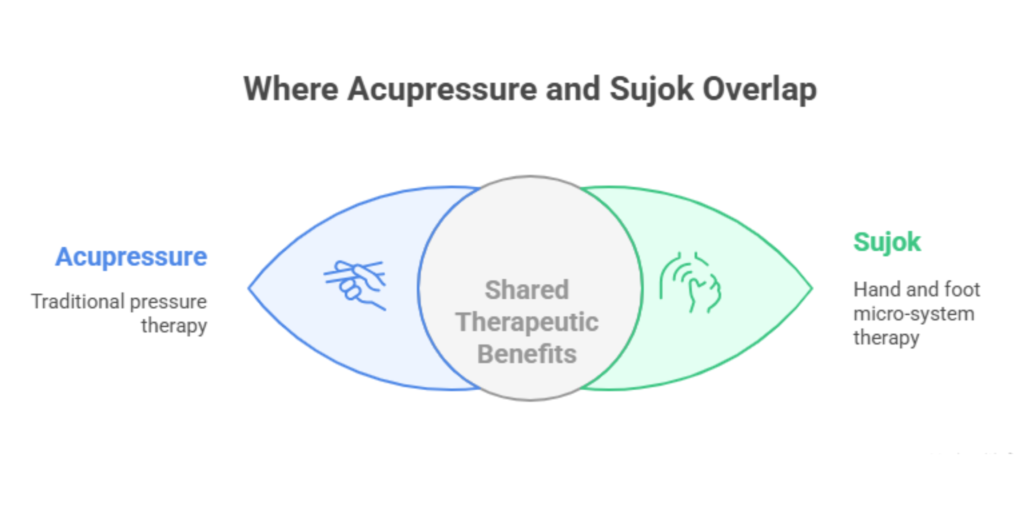
To truly understand what is the difference between acupressure and sujok, looking at real-life stories can offer powerful insight. Both therapies have helped people across ages and conditions, but their effectiveness can vary depending on the type and severity of the issue.
✅ Acupressure in Chronic Conditions
At IDA Cure, Dr. Neha Patel recalls a case of a 45-year-old patient with chronic cervical spondylosis who had been reliant on painkillers for years. After just 8 sessions of targeted acupressure therapy focusing on the neck and shoulder meridians, the patient reported 60% pain reduction and improved sleep without medication. This is a classic example of how acupressure excels in managing long-term or systemic issues like arthritis, insomnia, and stress-related ailments.
✅ Sujok in Acute and Everyday Conditions
A 32-year-old office worker suffering from acute migraine attacks found relief through Sujok therapy. By applying black pepper seeds on her thumb joint (corresponding to the head area in Sujok mapping), the frequency and intensity of her migraines dropped noticeably within two weeks. Sujok’s focus on microsystems makes it particularly useful for acute conditions, such as sudden headaches, nausea, or menstrual cramps.
✅ Comparative Benefits
- Chronic issues: Acupressure often offers deeper, longer-term relief by working on entire body systems through meridians.
- Acute or surface-level concerns: Sujok provides fast, accessible relief by targeting the hand/foot microzones.
Testimonials from IDA Cure patients frequently highlight how having the option to choose between these therapies—or even combine them—under the expertise of Dr. Neha Patel has transformed their health journey.
Understanding what is the difference between acupressure and sujok through real experiences reveals that while each therapy has its strengths, the right choice depends on your lifestyle, condition, and comfort.
Read More : Where Can You Find the Most Trusted Naturopathy Centre in Lucknow
Safety, Precautions & Expert Advice
While both therapies are known for their non-invasive, gentle, and drug-free nature, it’s still important to consider safety guidelines. Knowing what is the difference between acupressure and sujok also helps determine when self-treatment is safe—and when professional supervision is essential.
Who Should Avoid These Therapies?
- Pregnant women should avoid certain pressure points, especially in acupressure, as they may trigger contractions.
- People with open wounds, fractures, or severe circulatory issues should consult a healthcare provider before starting either therapy.
- Those with serious chronic illnesses like cancer or heart disease should always get medical clearance.
Can They Be Done at Home?
- Sujok is widely regarded as beginner-friendly and can often be practiced at home using simple tools like seeds or magnets.
- Acupressure, while doable at home for general wellness (e.g., stress relief), is best guided by professionals for deep or chronic issues.
When to Consult a Professional Therapist
When dealing with persistent pain, complex conditions, or unclear diagnoses, always consult a certified expert. At IDA Cure, Dr. Neha Patel offers individualized treatment plans that ensure both safety and effectiveness.
Possible Side Effects
Both therapies are generally safe, but incorrect pressure or placement can sometimes cause:
- Temporary soreness or bruising
- Mild dizziness or fatigue
- Worsening of symptoms if done improperly
That’s why understanding what is the difference between acupressure and sujok isn’t just informative—it’s essential for practicing these therapies responsibly.
For personalized guidance and safe, effective care, it’s always recommended to visit trusted centers like IDA Cure, where Dr. Neha Patel blends traditional wisdom with clinical expertise.
Read More : Naturopathic Management and Therapies for Paralysis Attack
Conclusion
In summary, what is the difference between acupressure and sujok? Acupressure is an ancient technique from Traditional Chinese Medicine, focusing on stimulating meridian points across the body to balance chi (qi) using manual pressure. In contrast, Sujok, a more recent therapy from Korea, works through the hands and feet as microcosms of the body, often using seeds, magnets, and tools for targeted relief.
While acupressure is highly effective for chronic, full-body conditions, sujok stands out for its simplicity, accessibility, and quick relief in localized or acute issues. Both methods promote self-healing, are non-invasive, and can be adapted to suit individual needs.
If you’re considering a natural path to better health, this is your sign to explore these holistic healing systems. With expert guidance from practitioners like Dr. Neha Patel at IDA Cure, you can confidently take the first step toward wellness.
Whether you’re new to alternative therapy or seeking certified care, consult trusted professionals to ensure safe and personalized treatment. Understanding what is the difference between acupressure and sujok might just be the key to unlocking a healthier, more balanced life.
